Having dug up a mountain of rusty nails, wires and other useless objects from the ground, a person begins to wonder where to look for coins. A lot of places, and everything seems promising, until you face the reality: it’s not so easy to find something worthwhile.
With all the nuances of the search for coins still looks like a fishing. You never know how much effort you need to make in order to "get" a goldfish.
Do not look for a homemade or the cheapest metal detector. Pay attention to the models, which at an appropriate price have important characteristics.
Examine what signal he reacts to certain objects, record the information received in a notebook. Examine the device, be more cunning than it, so that later it does not outsmart you, forcing you to dig at any point. Although at first you have to do it.
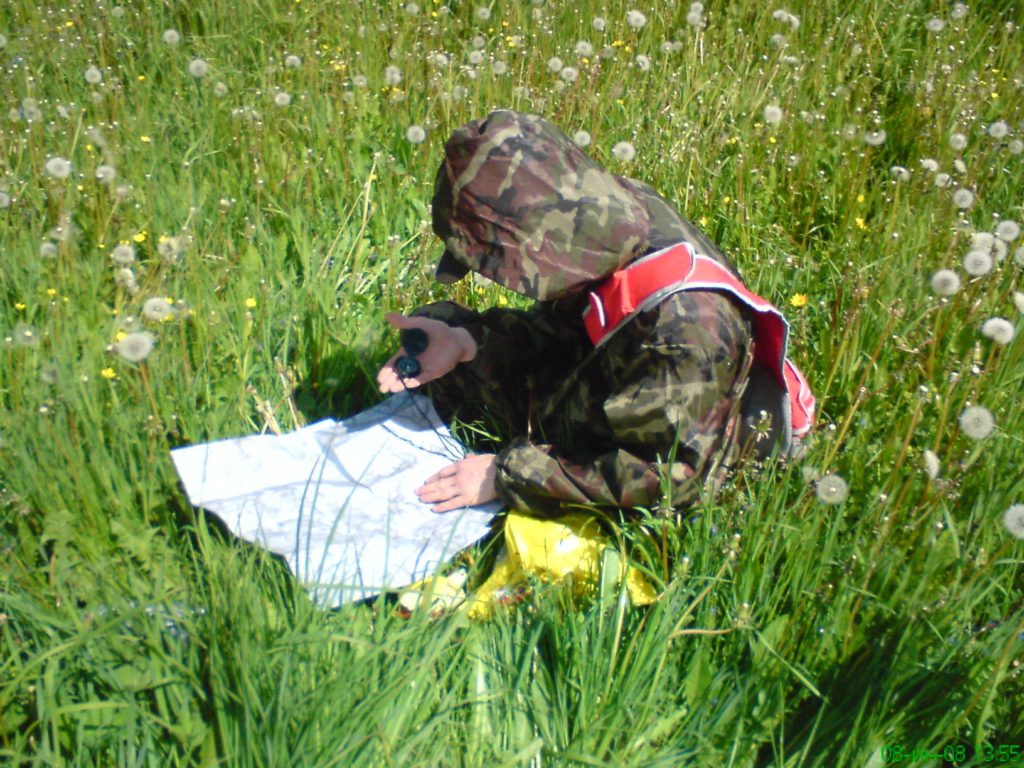
How to choose the best metal detector for you? Consider the important technical characteristics of the device:
- Object detection depth This criterion is directly related to cost. The device in the range of 15-25 thousand rubles has good search capabilities, modern complex technologies were used for its assembly.
- Differentiation of materials. The best metal detector, which at high sensitivity does not respond to an electrical signal, filters soil interference. In mineralized soil, not every device can detect a coin at a depth of 15 cm.
- Working frequency The lower it is, the deeper the metal detector detects the object. The high-frequency device detects small objects at shallow depths.
Then you all know: you need to buy a metal detector for less than 10-15 thousand rubles, dig coins for half a bayonet, carry all the found metal debris away with you and dispose of it at the wrong place.
A good place to dig for coins: how to find
In 2016, the search for gold coins, treasures and antique metal household items was carried out on the fields, places where there used to be churches, in old merchant houses, on the roads. Knowledge was brought to these places not by intuition, but by knowledge. Where to get them, consider below.
- Cartographic method.
Looking for a map of tsarist times, compare with a modern map and get points where you can find interesting things. The method is simple and effective, in practice, many use it.
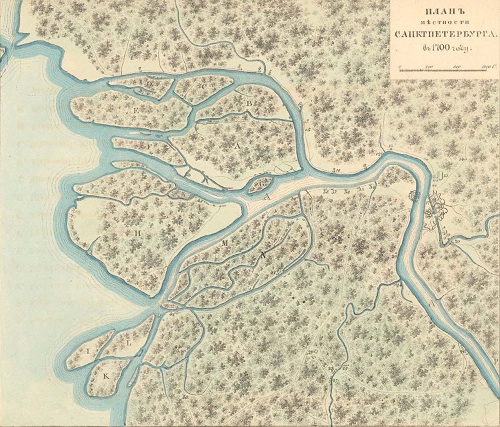
Will suit you:
- the three-twister 1860-1890;
- plans for a general survey (they will be useful for verification);
- old maps of the XIX century;
- maps of the USSR General Staff;
- mende cards.
Do not forget that you use cards not only. Be prepared for the fact that the places where you come to dig, already "cleaned".
- Satellite images.
The correct work of the treasure hunter with the map is to discover the historical places where there was a human movement. These can be villages, taverns, fairs, houses, postal stations, mills, trade routes, places of military operations. Then you need to open a satellite map of the same area and find this place from the common points of the landmark. Such points can be ravines, intersections.
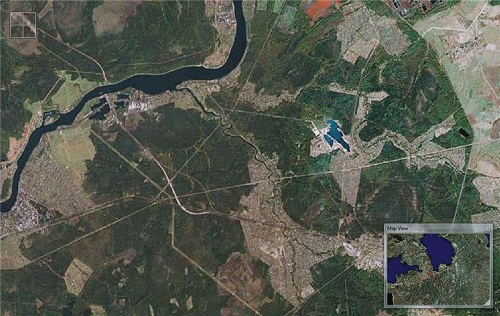
Developed special applications with a base of old maps. They allow you to find the desired point without resorting to additional search tools. Still used a wonderful program Ozi Exoplorer to work with raster maps. In this program, they are easy to scale, flip through the map, switch between maps.
Council There are sites that provide linked maps, for example, etomesto.ru. The convenience of its use lies in the fact that you can impose a new card on the old one.
- Archives.
Some diggers can not do without going to the archive. In the archive you can find documented information about old villages of rather small scale, about individual houses and their owners. An alternative to the archive is the museum, where you can find out what territory you can find. Visit also the local history department of the city library.
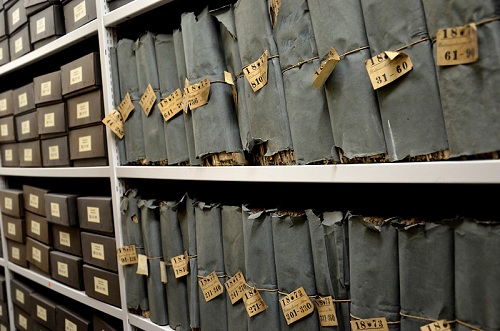
Talk to the indigenous people of small farms, they can tell you where the river beds were, where there were still settlements. In short, look for your own, unique cop point.
- GPS navigation.
There are two options: you can use a car navigator or a smartphone with the appropriate software. The car navigator in this regard loses a little: the battery sits faster, the image is of poor quality. But any navigator does not show with absolute accuracy where you are.

There will always be an error of ± 50 m. This method of searching for a digging point is suitable upon arrival at the terrain.
Where and what to look for
You have to decide what you want to find: Peter's coins, “scales”, foreign doubloons / pence / zloty, rare coins of the Second World War times, early Soviet coins. Once you decide, choose the terrain. Whether it will be an old farm, a church or a former collective farm depends on the purpose of the digging. Where better to search for old coins with a metal detector? Where they drop.
For example, in 2016, treasure hunters managed to find near the church, which had burned down in 1932, several halves of 1851, crosses, icons tops, the “scales” of Ivan the Terrible, coins of 1934 and 1924, as well as other antiques. Collectors will appreciate such finds.
- The road is far.
Old abandoned road can be your amazing journey, if not the path to wealth. The road may connect settlements that may also interest you. On the way, merchant caravans marched. The point where several roads intersect cannot be “empty”, probably there are taverns or chapels located there. Treasures were often buried on the sides, if it was difficult to carry them further for some reason.
![]()
In 2016, he rang the metal detector of forgotten paths from place to place and brought diggers more finds than the places themselves. Wallets with coins, coins of Peter the Great, a penny of Alexander II, silver and even gold coins were found. All this can be seen in the video.
On the way to a deaf village or a manor’s estate, be sure to check the roads, check the forest paths, as well as roads with a historic surface. There is no need to dig deep on the roads.
- Forest finds.
The study of a forest belt with a metal detector almost always brings results. This is a win-win. If you are going to an unfamiliar place, take a look at the map and make sure that there is a forest nearby where you will go in case of failure.

If you have the opportunity to wander with a metal detector in a huge forest, then you have two options to search for treasures. One option is a free walk through the forest, during which you can find the remains of villages, cities, half-ruined manor houses, etc. There is a video from 2016 where treasure hunters find a lot of royal and Soviet coins in the meadow where the village was located in ancient times.
The second search option is to use the navigator and maps. And this is right, because without instruments in an unfamiliar forest, you can get lost!
Council If you find a place on the map and go to it, do not be surprised that it is already covered with pits. The cards you use are available to everyone.
It is more pleasant to wander in the forest than across the field, but here you are waited by some nuances. Experienced treasure hunters warn:
- Mosquitoes, bedbugs and other insects in the forest is enough. Dress so that there are no unprotected parts of the body.
- Digging in the forest, you can stumble upon the roots of trees. This complicates the search for coins.
- If you walk with a metal detector in the former village, be careful with the grave pits, wells. Usually, nettle thickets form along their edges.
- If you come by car, you will have to leave it far from the site of the cop, because in the thicket you will not be able to get closer.
Most likely, hoping for "maybe", you will find household items, horse meat, small coins. Having found the foundation of the stone house, you can be sure that a rich man lived here, so ring all carefully.
- Where to look for coins in the house.
To begin with, make sure that the house does not belong to the summer residents, and it is at your disposal. In the archive go, find out who this house belonged to before. In the winter of 2017, several treasure hunters searched the house previously owned by two merchants. Their attempts to find something were unsuccessful, but another team found about a hundred coins of Tsarist Russia, including gold ones, in another house. How to find coins in the house, talk in this section.

It is advisable to search for gold coins in homes. Because our pagan ancestors had a custom - to put coins under the mortgage when building a house. To remove them, you will need a chainsaw. Otherwise, the corner of the house you do not file. In addition, the coins were put in the corner under the icon, under the floorboards, under the logs, hid in the walls.
Council Arm yourself not only with a metal detector, but also with a coil-sniper, as well as hand-held metal detectors for ringing walls, baseboards, grab a crowbar.
The first thing you need to worry about in the old house is not the safety of the coins, but your own safety. Old beams may collapse, the old storeroom may not bear your weight. So be careful.
In this article we have listed the main and common places where the search for coins and treasures will always be conducted. Do not think that the further you go, the more expensive the finds will be. Connect your imagination, wit, logic, and find "your" place!
Much depends on equipment, for example, modern metal detectors are able to determine at a depth of what metal the find is made: silver, gold, and maybe a copper coin. But even the most expensive device will not replace experience and intuition. Diggers that have been searching for a dozen years are able to determine the value of a deposit by just one sound signal.
Metal detector thing is not the cheapest. Therefore, the choice of inventory must be approached with the utmost seriousness. It is best to buy once and enjoy searching for a treasure for several years. All devices for searching for coins and other deposits are divided into three groups:
- Devices with underwater search function. The waterproof case and the presence of various functions, which greatly facilitate the search for a treasure under water, make this device unique in its segment. But It is worth noting that such devices are quite expensive.
- Soil metal detector. The most common type of device among the diggers. A wide range allows you to choose a model with a different set of functions that can satisfy the different needs of beginners and experienced treasure hunters.
- Devices for deep searching. An ordinary treasure hunter would not need such a device. After all, it is designed to search for large deposits at a fairly large depth.
Council If you purchased the most expensive device, but there is no result - do not despair. It is important to remember that the treasure is looking for man. The end result depends on his desire and experience. Experienced diggers can only determine what is deep in the ground with a single sound signal.
Remember that the price does not speak about impeccable quality. To search for coins and other historical things that are hidden deep in the ground, a common dirt detector is sufficient. Many treasure hunters combine land searches with underwater ones. In this case, you will have to acquire two devices: an underground and underwater metal detector.
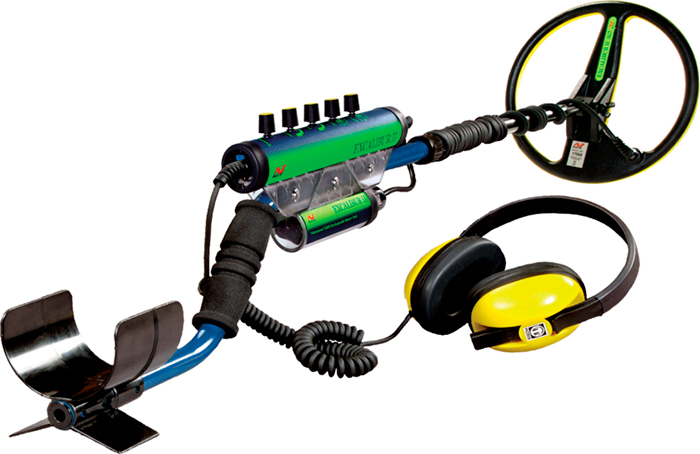
To search for coins, it is better to purchase two metal detectors - ground and underwater.
Where and how to search for ancient coins
Your future discovery is directly dependent on the area that you have chosen as a platform for research. Get old maps of the district, city. There are various programs with raster maps that will allow you to track where in the 18-19 century there were settlements near you, fairs and other habitable places. For a personal computer is great program Ozi Explorer. But it’s impossible to take a PC with you on the road, and it’s expensive to take a laptop, and the card is best kept at hand.
A program with a different set of ancient maps has been developed for mobile phones. It is called Androzic. Ancient maps are compared with the real picture of the world, after which the point of the cop is determined. Here you should also consider your own preferences. What are you interesting in? What coins do you want to find? This should be considered when viewing the old map of the area.
Try to start your search away from the city. Drive a decent distance from current settlements. For many newcomers, finding a Soviet coin is just luck. But if you can understand historical maps, you will bring yourself closer to rare finds. But it is also worth understanding that only a few find the real treasure. If you come across coins of the Soviet type, do not rush to despair, because even among them there are specimens that are held in high esteem among collectors.
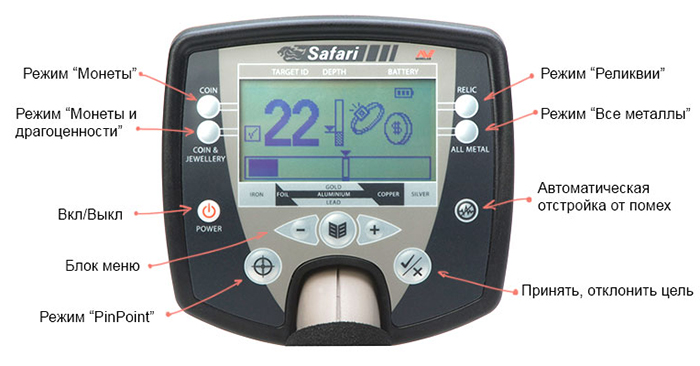
Tips for choosing a metal detector and a suitable search area
Cheap devices have a shallow depth of scanning and are highly sensitive to interference. For a metal detector, any coin is a non-ferrous metal. Complicating the search can the fact that around the treasure will be third-party items that will knock the novice digger the right way. A good purchase will be the purchase of a device with the function “coin mask”, thus you will set the settings and the ultimate goal of the search. A good metal detector must be equipped with a discriminator for separating purposes, in round objects. It is desirable to choose among devices with a display, at the first stage it is simply necessary.
Council A relatively new coin expresses itself at the cost of brilliance. With the old version, everything is much more complicated, because the object is covered with a centuries-old layer of dirt that prevents detection. Experienced diggers recommend starting the search immediately after the rain, when the topsoil is almost blurred.
Best places to search for treasure:
- abandoned historic villages;
- roadside roads;
- the places where fairs ever took place were driven by merchants;
- reservoirs - for underwater metal detectors.
Treasure hunting - the right way to get a new hobby. During the search for treasure, be careful and follow safety precautions. It is best to go to the point of a cop a large company. It is not only much more fun, but also more profitable.
Search for coins with a metal detector - video
Immediately I would like to make a reservation that this article is devoted more likely not to search technology, but to the choice of location. And that's why. Taking up his first device - a metal detector, the novice immediately rushes into battle, dig, search for treasures and artifacts. And then he faces the question: where to look? Where to go or go?
And although it was necessary to think about this before buying a metal detector, because you planned to use it as it was. However, for quite "green", all is not lost. Let's try to somehow systematize and group the main places to search for coins and other artifacts.
Search for coins on the beach
Perhaps one of the most accessible places to search is the beach. Available - yes, but believe me not the easiest. There is a beach in every village where there is a little bit inferior, but a reservoir where you can swim. Naturally, the larger the beach, the more finds, and indeed the space for searching. Of course, you should not expect to find a treasure on some village beach on a nearby river. And in general, there are separate places for treasures, on the beach you can hardly find it.
The main beach finds are coins, mostly modern “walking”, i.e. coins, which are still in circulation, and coins of the period of the USSR. Plus, everything that once could have lost the rest: watches, buttons, brooches, badges, silver jewelry, with a certain luck, even gold jewelry. But do not flatter yourself and immediately rely on gold. First, as a rule, gold “rises” with the help of a metal detector on large beaches, where traffic is quite dense. Secondly, do not forget that in your hobby you are not alone and competitors are not asleep. Thirdly, imagine a situation when a certain aunt will lose a golden ring on the beach. Yes, she is more likely to sift this beach for the whole family than to simply spit on the loss.
And remember, the older the town where the beach is located, the more ancient finds you will come across. For example, in a large city on the beach you can even find “scales”. Most likely, in pre-Petrine times there was no beach here, but there was movement, merchants came on boats, unloaded goods, made deals, etc.
One of the obvious advantages of the beach is the constant updating of the finds. We dug up the bulk of the “losses” this season (not all! This is unrealistic), the new season has come - people have begun to lose things again. But there is also a minus, and the global one is a huge amount of garbage on Russian beaches. Believe me, the search will not be boring. "Ringing" will be all, but learn how to use the settings of the device and distinguish sounds for different types of finds.
With a metal detector at the tracts
In general, the term stow does not always indicate the place where a village or another settlement once stood. But if you already went to the treasure hunters and chose the search for old coins as a hobby, then you should get used to slang. So. In the treasure hunt, the tract is the place where a certain settlement (a village, a farm, a village) once was located.
Perhaps the former place of settlement is the most promising place where you will not be left without coins. Even if it is already beaten-killed by other treasure hunters. After two or three hours, maybe more hours of search, you will become the happy owner of a pair of green “kakalik”, which, even with great desire and opportunities, are unlikely to be cleared of oxides. Well, they are such ancient coins.
To expect to find an abandoned village in which no one ever went to the metal detector in our days at least naively. Yes, of course, they are, but do not forget that you are not a hardened pro. You do not yet have the experience, and often the means, to not only find, but get to this very village.
You should not despair, very often where the hundred or two old diggers went, the newcomer picks up a rather interesting find.
 How to find places of former settlements? Work with maps, work with the public. If you live in a small village, try communicating with old people. 100% that they will tell you that once “there was a village of Kiselyukha behind that forest”, and here there was a forester’s house or something like that. Well, then the matter of technology. Grab the metal detector, legs in hand and forth in search of Shmurdyak and old coins.
How to find places of former settlements? Work with maps, work with the public. If you live in a small village, try communicating with old people. 100% that they will tell you that once “there was a village of Kiselyukha behind that forest”, and here there was a forester’s house or something like that. Well, then the matter of technology. Grab the metal detector, legs in hand and forth in search of Shmurdyak and old coins.
To work with maps you have to sweat a little. First of all, you need the most detailed modern and old maps of the area. Fortunately, you can buy the first in any large bookstore or use Yandex.Maps, Google Maps or similar services. And second, you can also download without any problems, the Internet is full of various archives of old maps. You just have to take these two cards and compare them with each other (more details about working with cards will be written in the following articles).
Coins right on the road
It is not necessary to search for coins and treasures only in the places where people lived. It is important for you to find places where they have been at all. This may be some kind of freestanding marketplaces, fords, workplaces, jetties on the banks of rivers and lakes, and more. I would like to say separately about the roads as promising places where the search for coins will surely bear fruit.
There were once separate settlements, but they were not closed, they communicated with each other. With what? Right, dear. On the roads, people visited each other, transported goods, just traveled. And again, constantly losing something - coins, clothing items, things. Your task is to detect these losses and let your search be successful.
Of course, you should not run with a crowbar and crush the asphalt near your house. For this, no one pats you on the head. Choose the road faster, in places more obscure. So that the rubbish was smaller, and so that nothing clouded your search in the form of angry residents of a nearby village, which you deprived of the only passage to the house.
Separately, I would like to say about hoards on the roads. It is a mistake to think that it cannot be found there. Can. Imagine a situation, a dirt road in a thicket 200 years ago. People moved in carts pulled by horses. The speed of movement is not very high, in order to drive, say, 150 km you need to spend more than one day. And the population is not as thick as it is now, it happened that you would not meet a living person in a day. Hence the rampant robbers, especially in forest regions. And here comes a merchant, and then the attack! What to do? Hiding the most valuable, where? In the ground, under the roots of a tree, in a hollow. Here you have buried treasure.

Legends and Myths
And how rich in fairy tales is the oral rumor of our Russian rural population. What is not a story is necessarily about the treasure of Napoleon himself or at least about Kolchak's gold. But it is important to understand that in our village people are impressionable and often drinkers, and they will not tell the same.
For the sake of experiment, go to any village and ask the local aborigine: "And where is your lordly estate?". And believe me, she (the manor!) Is sure to be found. It doesn’t matter that this is a former mechanization yard (or a church, or even a barn, or something else, the main foundation remains) and it doesn’t matter that the village itself has existed since 1947 (for example), but believe me, everyone will remember that the boys they climbed there. Hence the conclusion, before thinking about the existence of the legendary treasure, check the information. In an empty search, you can hardly find the consolation and satisfaction of your ambitions. The maximum that you find on the site of the former cowshed of the USSR times is a few coins of the same period, and a bunch of garbage.
Nevertheless, there are legends about treasures and they do not grow from scratch. Look for, check and good luck will smile at you.
So, you purchased your first metal detector. What to do next? Where and how to search for coins and other historical artifacts? How to choose the right place to search with a metal detector? You need to look for where they once lived, did something, organized their activities of a particular character.
Of course, it is worth starting with the disappeared settlements. Surely near your house, within a radius of 10 km, or even less, there is not one tract on which the village was previously located. You can test your metal detector on it. Further more, villages like this huge set, it remains only to calculate their location, this will require ancient maps. Where to download, I repeatedly wrote in my blog, I laid out many myself. Therefore, we will not dwell in particular on the villages; this topic has been sufficiently covered in numerous sources. It is worth noting that such relative availability of ancient villages has two downsides: on the one hand, they are easier for you to find, but on the other hand, they have probably already been found before you. Of course, there are no broken places, but it is always pleasant to walk around the untouched earth with the device.
The second most popular place to search is the beach. In my opinion, it is also very clear and understandable here. There is a river (lake, sea), there is a beach where people relax and sunbathe, respectively, there are also lost items that your task is to find. At the same time, it is necessary to look not only on the shore, but also in the water. In the presence of an underwater metal detector, this task is greatly simplified; if you have a conventional device, you can search at a limited depth, not exceeding the distance from the coil to the power supply. Search on the beach also has its pros and cons. The advantages include: accessibility, finds are updated every year, there are no problems with the law. Cons: a lot of metal debris, finds, as a rule, are not very interesting.
Perhaps, with the simplest places to search and everything, but this is only with those that are called, lie at the very feet. We are not looking for easy ways? Then where else can you find ancient coins?
After all, people did not just live in their villages, they still traveled, moved between settlements in trade and economic affairs, or out of idle curiosity - “just to see.” And they did it not just anyhow, but along the roads. These are the roads and old roads that can be the object of your research. Any roads - abandoned and current, field and forest. The older the road, the more dense the traffic of its movement once was, the more coins were lost in the entire history of its existence, the more you can find it with the help of a metal detector.
I already wrote separately about how to find them, described the search technology and told a lot more. I will run one more time. Particular attention should be paid to intersections as one of the iconic places on the roads, fords across the river. Searches should be carried out not only on the road itself, but at a distance of "great need" (let's call it the way one of the LJ users said). Of the features of treasure hunting of coins on the road, it should be noted that the density of the soil is high, so you have to work hard.
We continue to expand the horizons. You already searched for coins on the beach, but you probably didn’t think that the river itself is a source of interesting places. First, the pier. Everything is clear here, we are looking at the old map, where the wharves and moorings used to be located, and we are going to scour the coast. People came to the pier ships, went with them, unloaded goods. The footbridge is a rather shaky thing, they could have tripped over something and had to drop it, coins are no exception. Secondly, transported across the river, ferries. Here, in principle, everything is similar to the pier. Thirdly, this topic is already more extensive and requires detailed study of information - these are the banks of the once navigable rivers themselves. Previously, ships from one pier to another could move for weeks. Willy-nilly, and had to make stops for the night or for other needs. And on the rivers often the robbers used to fool around, for sure they all heard about the famous Novgorod ushkuynik. So, the robbers, and peaceful travelers, could easily stick a small “clutch” of coins and other valuables on the perceptible bank.
Forest, another one of the sources, all sorts of places to search for coins and other treasures. Quite often, when mapping old, small settlements in the 1-2 courtyards could easily not be included in the atlas. And how many such settlements across the country. And you can’t stumble on them except by accidentally or methodically combing forest areas. Why in the forest? After all, surely such villages could be in the fields? Could, but in smaller quantities. Most of the fields were developed, shared and there was no place for strangers there. And the schismatics could settle in the forest, the forester's arrest could be located easily, just stand some kind of a lodge.
In addition, the forest is a place where people are engaged in picking berries, mushrooms, hunting, and, consequently, they walk a lot, therefore it will never be superfluous to “ring” the forest paths. Of course, you should not count on rare finds and coins, and the number is not particularly impressive, but, nevertheless, the finds will definitely be.
There are actually a lot of such places, it is enough to talk tightly with the local population and they will tell you about the manor’s estate, about the landlord pond, and about some other “secret” place. It may be legends, but it is necessary to check.
It is important to remember only one thing - do not shit, wherever you dig! Do not destroy the monuments of history and culture, do not leave behind them the "lunar landscapes", do not destroy what is not built by you. Your freedom is limited where the other person’s freedom begins. After you there should not be such places like in the photo below. Indeed, in the end, treasure hunting is a hobby. not a way of making money. I found something valuable - well, I did not find it - nothing terrible, I had a pleasant time.

a clear division and cooperation of labor between its members
DVR functions from a to z
Yadashko V.I., Sokhin F.A. (ed.) Preschool pedagogy - file n1.doc
Registration by balloons of birthday and anniversary
What drugs can cause abortion